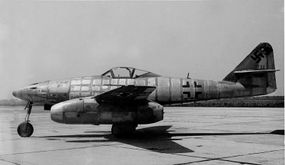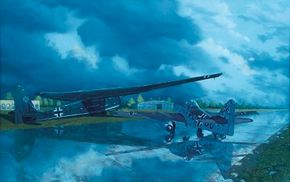Key Takeaways
- Capable of flying 120 miles per hour faster than the P-51 Mustang, the Messerschmitt Me 262 was the best fighter plane of World War II.
- Its late introduction to combat was due to delays in jet engine production, not Hitler's decision-making; had its introduction come earlier, it could have significantly impacted the outcome of the war.
- The Me 262's design, especially its dramatic swept wings, inspired future jet fighters and airliners, marking its legacy as a pioneering aircraft in aviation history.
The Messerschmitt Me 262 was clearly the best fighter plane of World War II, bristling with firepower and capable of flying 120 miles per hour faster than America's outstanding P-51 Mustang.
However, it is important to put a myth to rest about this classic airplane. The sleek Messerschmitt's late introduction into combat was not a result of Adolf Hitler's decision to make this jet aircraft a fighter-bomber rather than a pure fighter. The Messerschmitt Me 262 was delayed because the Junkers Jumo 004 jet engine that powered it did not reach quantity production until the spring of 1944. The real failure lies with the German Air Ministry, which did not recognize the potential of the jet engine and did not -- as it easily could have -- assign the priorities necessary to put reliable jet engines into production.
Advertisement

Had the Air Ministry done its job, the Messerschmitt Me 262 could have been in operation in great numbers by 1943, and the Allies would not have won the air superiority that made the June 6, 1944, D-day invasion possible. Without an invasion, Hitler might have connived a negotiated peace with Stalin, freeing up countless German troops for action on the Western Front. This in turn could have led to the atomic bomb being dropped on Berlin in 1945, rather than on Hiroshima.

Fortunately for the Allies, the delay in engine production delayed the Me 262's entrance into combat until the fall of 1944, by which time Germany no longer possessed the means to train pilots in the jet's use. Although some 1,433 Messerschmitt Me 262 fighters were delivered, only about 300 saw combat. There were probably never more than 36 in the air at a time when the Allies customarily put 1,000 bombers and 1,000 fighters over the ruins of Germany.
The great legacy of this classic airplane is that it inspired other air forces to adopt the jet fighter as standard, and moved engineers to utilize its layout -- swept wings and twin-pod engines -- for fighters and airliners.
Advertisement
